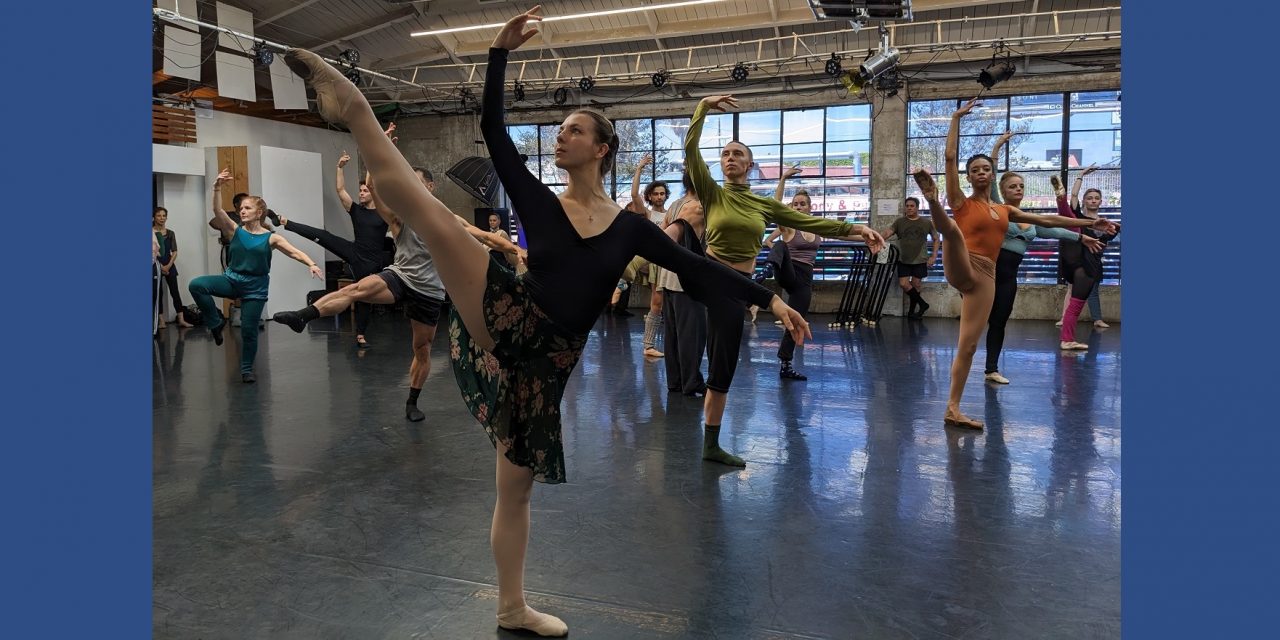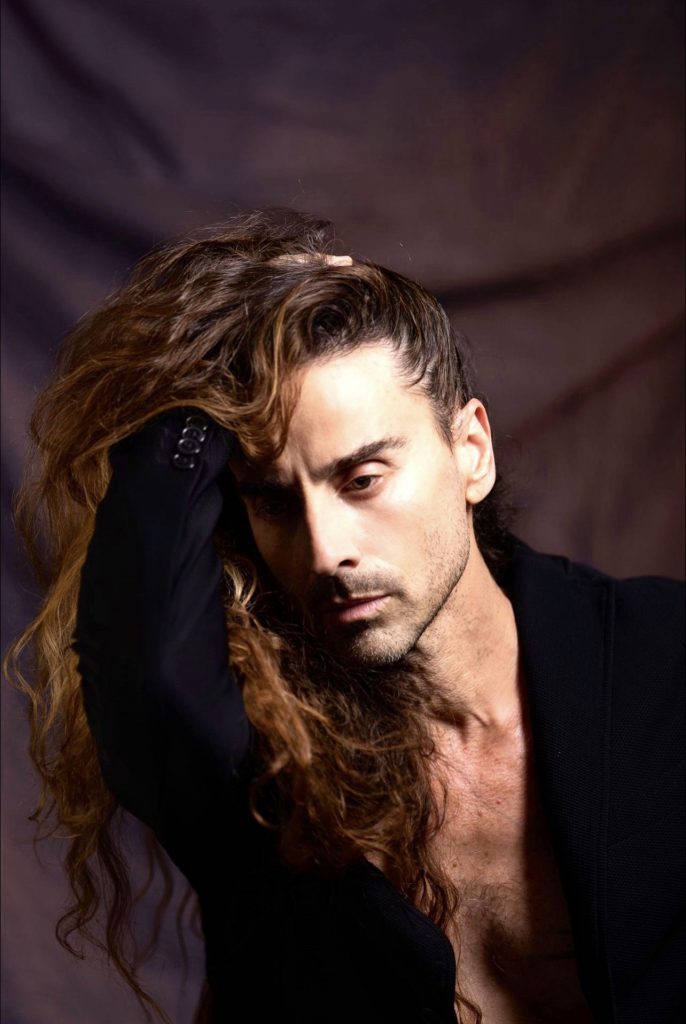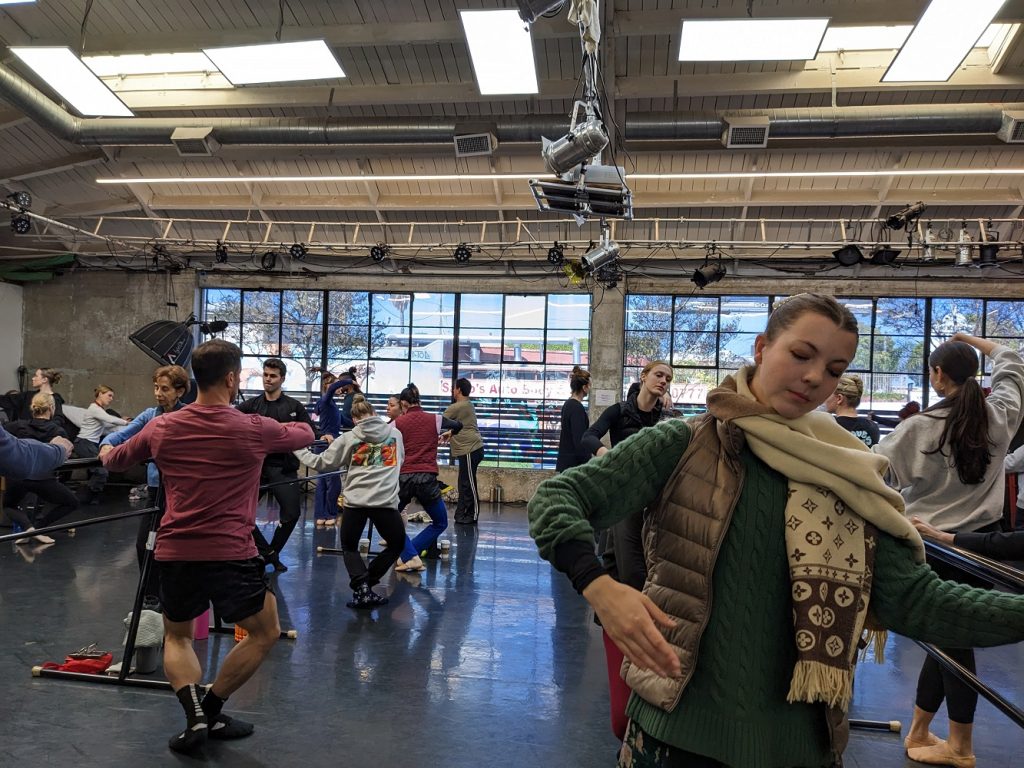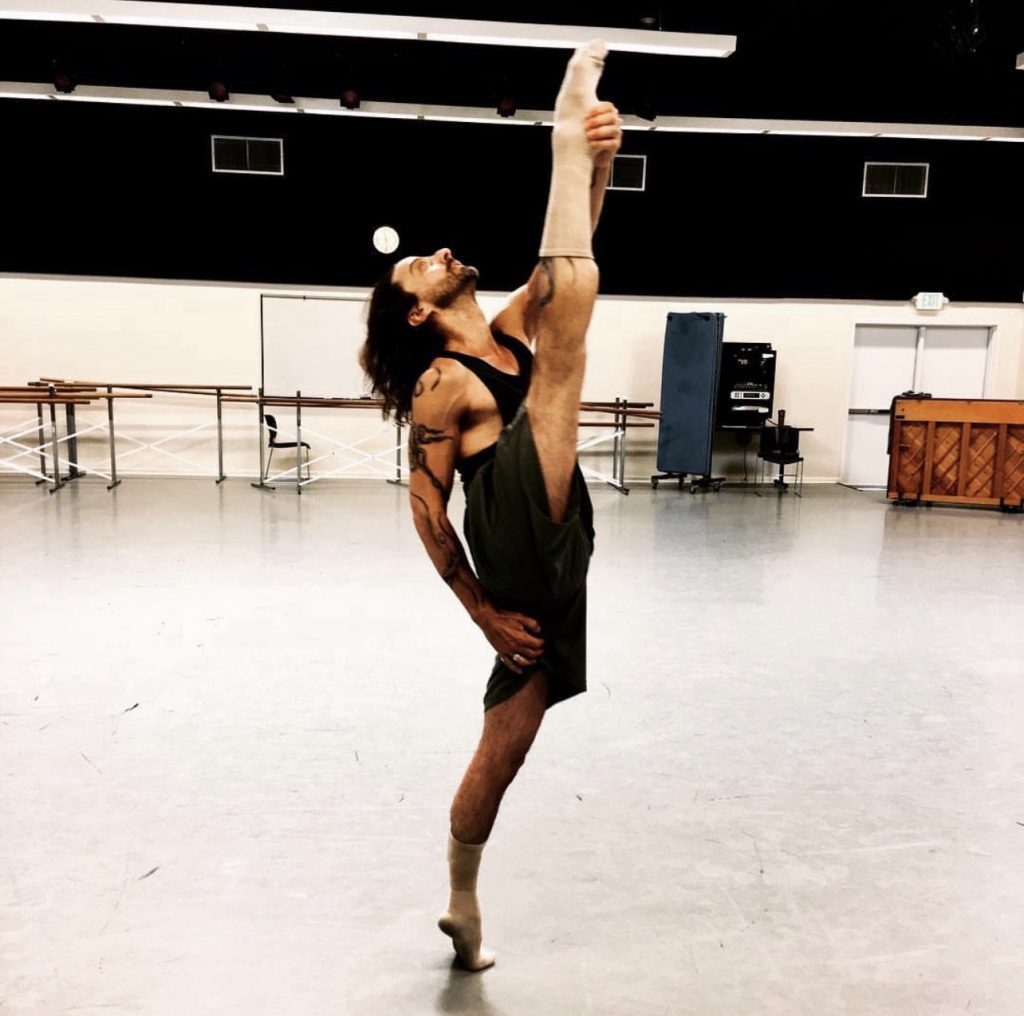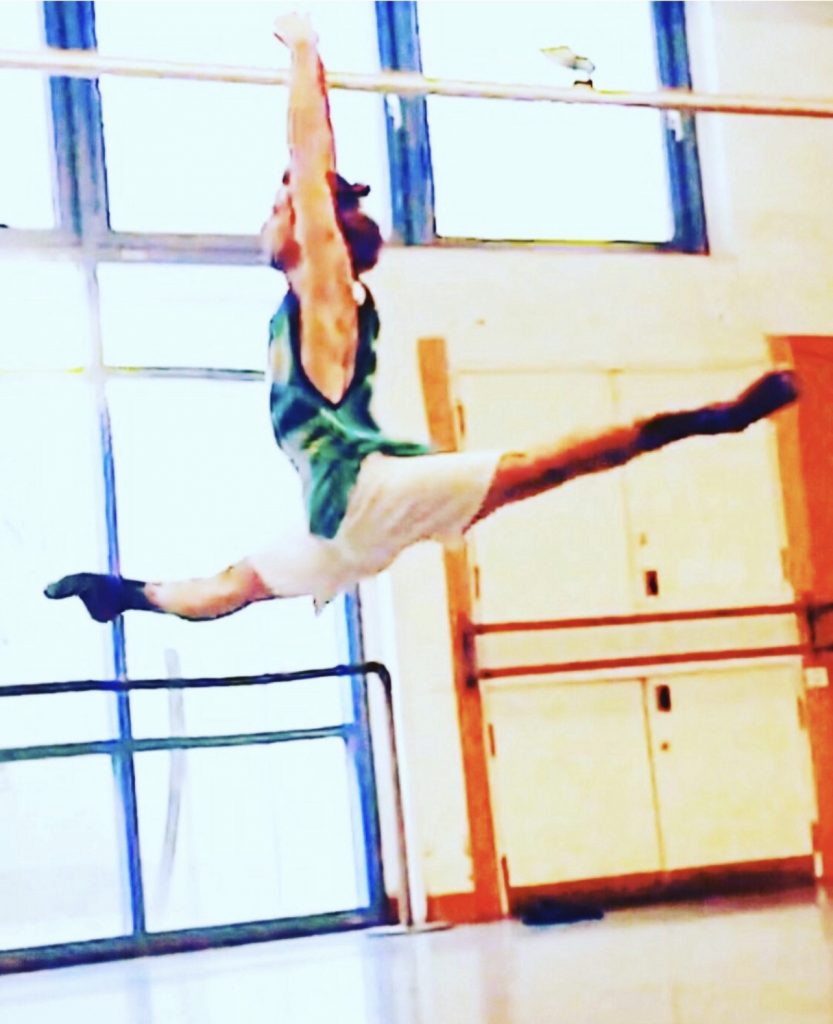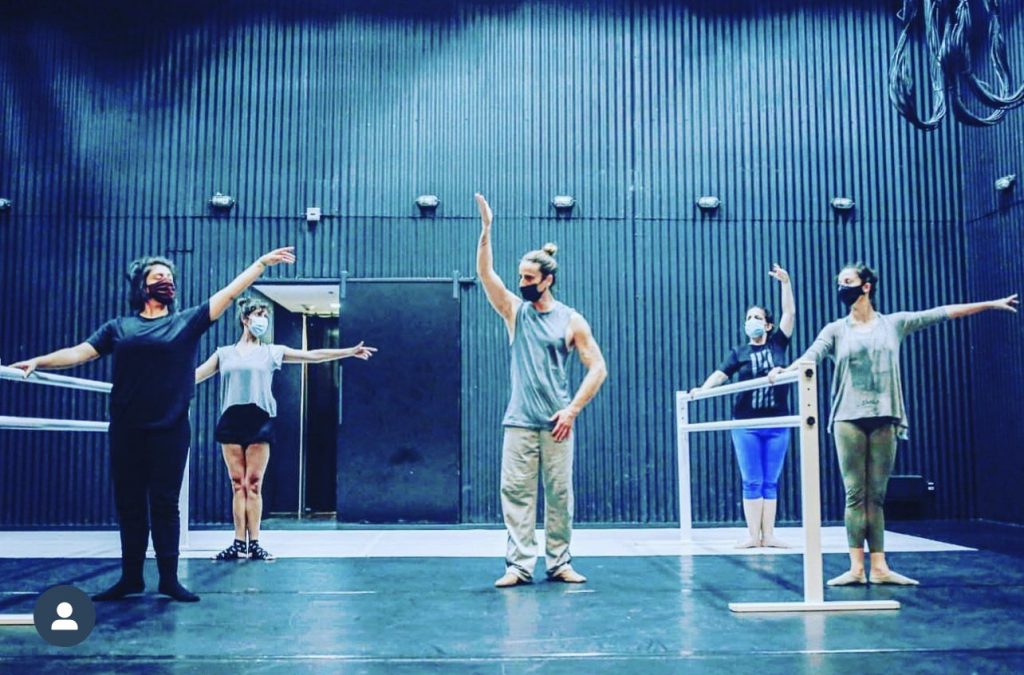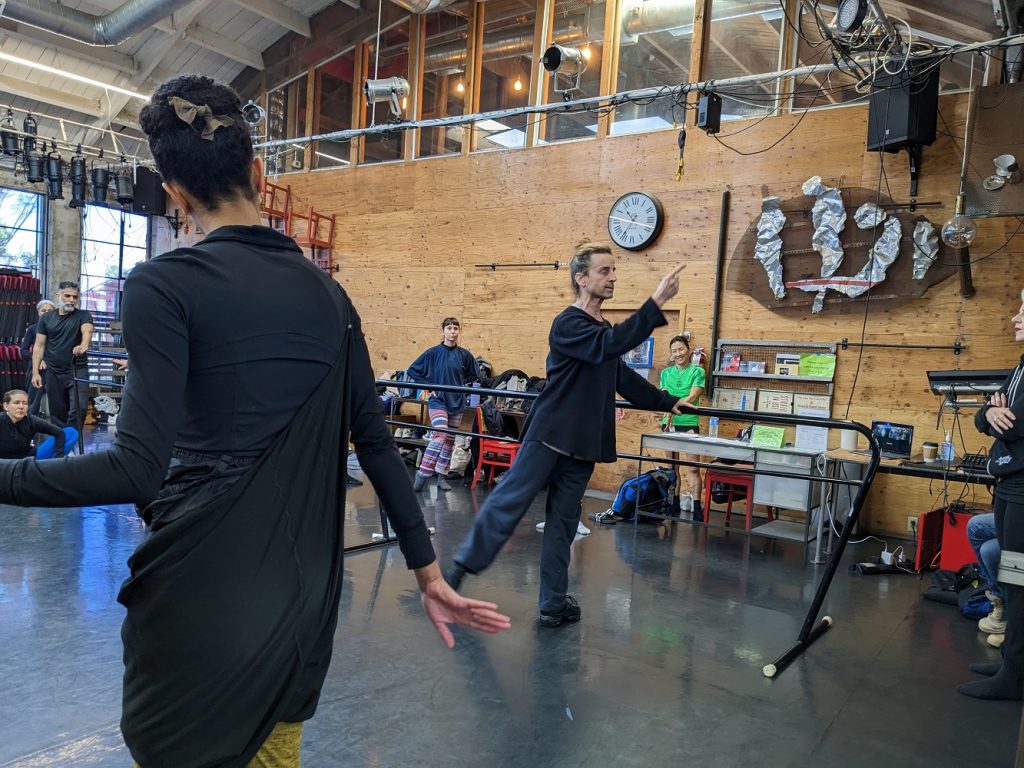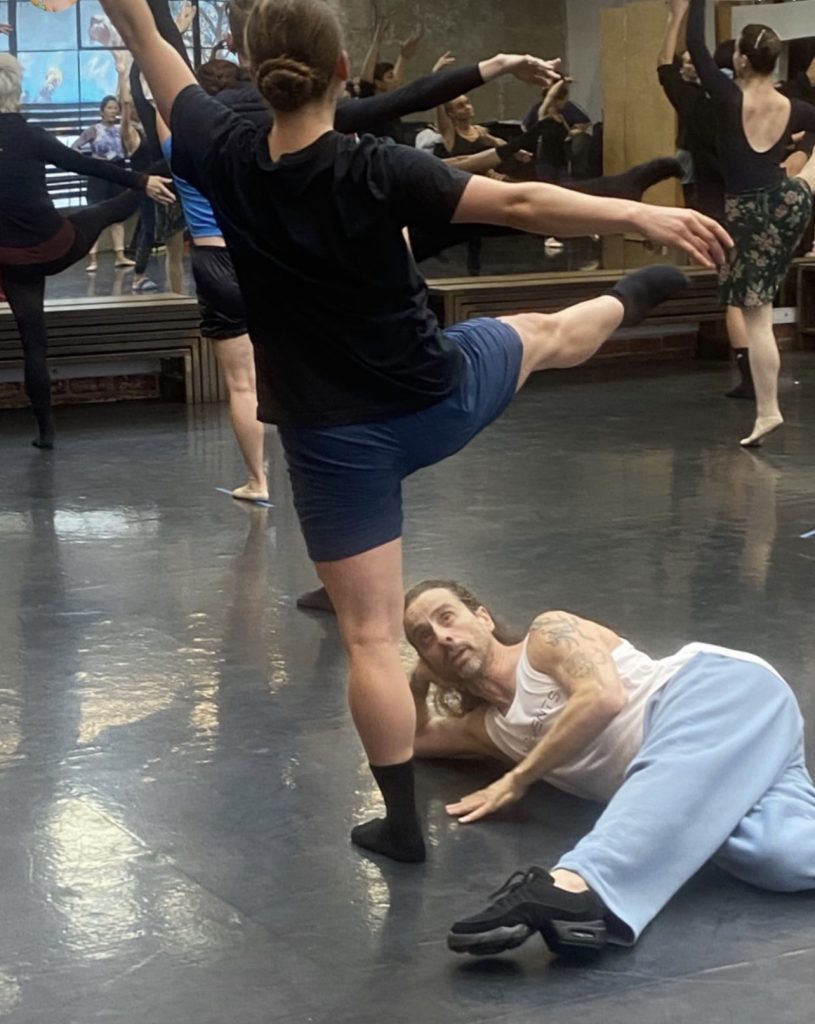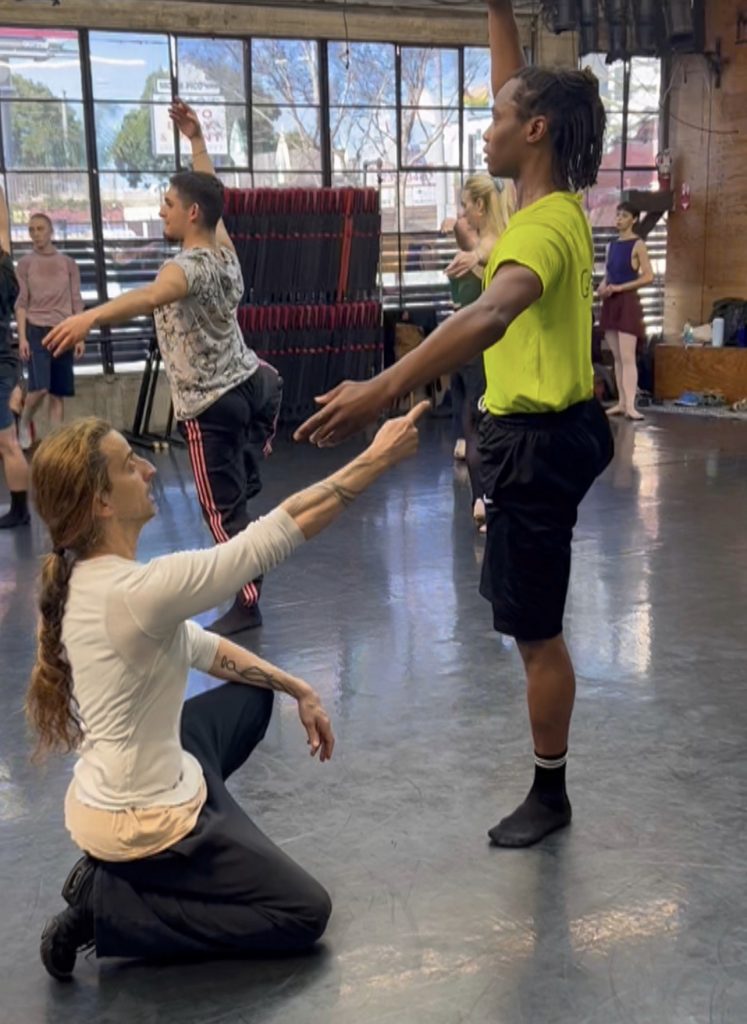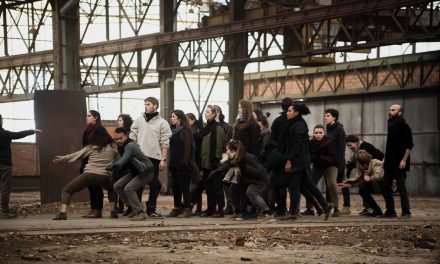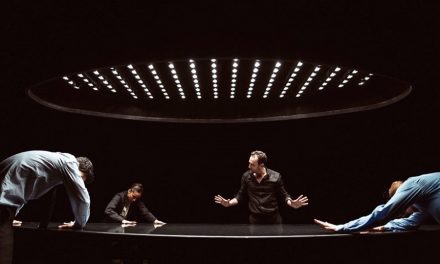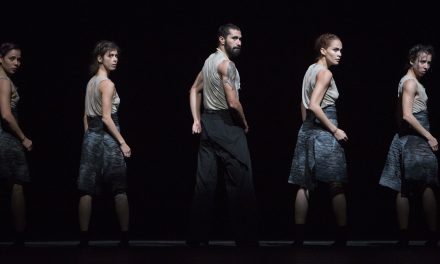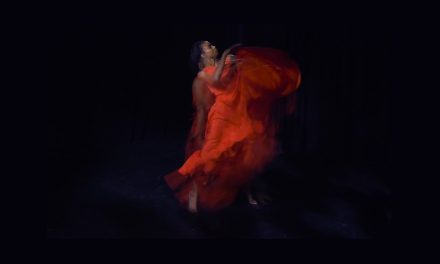For every serious dancer, finding the right teacher is crucial. A dancer needs someone who will not only challenge their skills, but a teacher who will continue to correct their physical placement while not destroying what first led them to the studio, the love of dancing and the joy of dance. A great teacher not only instructs but inspires, guiding students to understand that it is all about the dancing and not about their ego. Corrections to one’s technique are about improving one’s skills, expanding their abilities, and freeing a dancer to reach their full potential.
Recently I had the opportunity to meet and speak with such a teacher, Ido Tadmor. As a dance writer, I had seen Tadmor perform numerous times, but until this day we had not formally met. It was through a colleague, Laurie Sefton, that I was encouraged to observe a Friday morning class at Mimoda Studio on Pico Blvd. in Los Angeles.
The first sign that this was a class that L.A. dancers enjoyed was the fact that there were at least 50 people in class from all dance styles and age groups. Each one was welcomed into the studio by Tadmor with a hello, calling them by their first name, and giving each one a hug. This was more than simply wanting his students to like him, Tadmor wanted them to feel welcome and that they were in a safe environment for learning. All students were also gritted with kindness and a big smile by his assistant Diane C Shigekawa, who he calls his angel helping him in building a beautiful community.
Several portable ballet barres were spread throughout the studio and each dancer sought out a spot where they could work. It was chilly that day, so everyone was bundled up with layers of sweat pants, leg warmers, sweaters and even a scarf or two. These would, of course, be shed as the class warmup progresses and the sweat begins to appear. Tadmor led them through a series of exercises that were not only designed to loosen up the muscles, but to train the dancers proper placement and to prepare them for the longer movement phrases that he had prepared for that day’s class. Phrases that were so very musical and, from the elation emitting from everyone, enjoyable to dance.
Tadmor was born in Israel. He is the son of a prima ballerina, Netta Tadmor, and a commander in the army, Yeshayahu Tadmor. His mother began taking him to see ballets and museums when he was very young. He began his dance training at the Bat-Dor Ballet School with Rose Kassel, who to this day he credits as one of his most inspiring teachers. Kassel was the head of the dance program at the time, and she taught RAD and Cecchetti ballet techniques. “She would not let one bad movement go by,” Tadmor said. “She had eyes like a hawk!” At age 81, Kassel continues to teach in Israel.
The Tel Aviv based Bat-Dor Dance Company and school was co-founded by Baroness Bethsabée de Rothschild (Batsheva) and South African – Israeli ballet dancer and teacher Jeannette Ordman. During Tadmor’s time there, they were able to bring in some of the world’s best choreographers and teachers, among them Antony Tudor, Rudy van Dantzig, Lar Lubovitch, Alvin Ailey, Judith Jamison, Luciano Mattia Cannito, Hans van Manen, Martha Graham, Jiří Kylián, Israeli’s Domy Reiter-Soffer, and Igal Perry. Tadmor has also studied the acclaimed Vaganova ballet technique with Leah Shubert.
Tadmor went on to join the Bat-Dor Dance Company and later he became a lead dancer with the renowned Batsheva Dance Company where Tadmor met the second teacher who most inspired him, Jay Augen, who was ballet master at the time. Augen taught ballet in the style of George Balanchine which Tadmor said worked well with his RAD – Cecchetti training. The company toured a lot and Tadmor performed in works by numerous famous choreographers. After a year with Batsheva, however, he felt that he had much to learn about how to dance and made the decision to return to Bat-Dor Dance Company where there were better teachers. This proved to be a wise decision as his career soared and for four decades Tadmor represented the State of Israel as the “Ambassador of Dance of Israel” for three decades, he was an AICF recipient of excellence scholarships from 1982-1985. In 2011 Tadmor was the winner of the distinguished “Landau Prize” in Israel for life achievement and in 2013 the recipient of the international ICA Award for Life time achievement.
As a choreographer, Tadmor’s work has been presented on numerous continents and venues around the world including at the Kennedy Center in Washington, D.C. His work The Empty Room participated at the Sergei Diaghilev Competition of Choreographic Art in Poland, winning two awards. Engagé was a Polish-Israeli collaboration with the “Zawirowania Dance Theatre” and dancer Elwira Piorun, ex-soloist of the Polish Dance Theatre and the Polish National Ballet. Together with the choreographer Rachel Erdors they created a new duet titled Rust, a work that was performed in Los Angeles at the Luckman Center.
When asked what led him to leave Israel and relocate to New York City, Tadmor answered, “Lar Lubovitch.” Bat-Dor was performing in Canada and one evening Lubovitch came backstage and told him that one day they would dance together. A few months later Lubovitch traveled to Israel to set a work on Bat-Dor and gave Tadmor a solo within that work.
Tadmor returned to work with Batsheva and while performing in New York City, Lubovitch offered him a job as lead dancer in his company. Tadmor considered Lubovitch a genius and accepted the job. He performed with the Lar Lubovitch Dance Company for three years, 1989-1991 where he danced Lubovitch’s Iconic male duet Concerto 622. He then returned to Israel.
I was, of course, curious about why he decided to move to Los Angeles.
“I was already looking for an excuse to leave Israel,” he said. “I was the Artistic Director at the Israel National Ballet. I had done everything that I could, and also my husband Shalev Lavan, who is an international fashion stylist and I both decided that we need to explore the world.”
As a highly respected teacher, Tadmor has taught for leading dance companies in Israel, throughout Europe and in the United States. When offered the position as Presidential Fellow professor in the Department of Dance at Chapman University in Orange, California by dean Giulio Ongaro and Chair Julianne O’Brien Pedersen, Tadmor accepted. It was a limited position, but fortunately the department offered him a more permanent position.
“I am very happy with the position at Chapman University,” Tadmor added. “The woman who is the Chair of the department (Julianne O’Brien Pedersen) is one of the most amazing women I’ve met in my life. She is open minded, intelligent, and very, very generous. She actually gave me a very big window to bring some ideas into the university.”
One of those new ideas was about six years ago, Tadmor, together with Pedersen, created an annual event that has become a tradition called “Masters at Chapman” that brings in dance figures from around the world to teach and choreograph for the students. “Even American icons like Dwight Rhoden and Desmond Richardson, who dance together,” he said. “This year we are negotiating to bring in Doug Varone.” The program also brings in professionals from other disciplines such as architecture, theater, music, film, and literature.
Later during the interview, Tadmor spoke to how he felt when he first saw the students at Chapman University.
“I was blessed to teach in many universities in Israel, Europe, the State and in the far East,” He reflected. “The reason Chapman was able to bring me, to leave my family and friends and to come basically across the world was because I was amazed and shocked with the different atmosphere of generosity and individualism. That people are being allowed to be individuals in this department. It’s exactly as with this class. If you see the dancers, they don’t look the same. They don’t behave the same. They don’t come from the same backgrounds. Some come from commercial dance, some from ballet, and some from street dance. I think it is that that made me fall in love. It is like the cosmos of the whole world.”
Tadmor confided in me that he was uncertain about whether or not to relocate to Los Angeles and accept the position at Chapman University. “I’m so, so happy and proud of myself that I made the right decision to come here” he said, “because there are so many wonderfully talented dancers here. So many!”
He credits the Chair, Pedersen, with helping to create this wonderful atmosphere of community and learning.
Tadmor commented on how his classes managed to continue during the two-year shut down caused by the COVID-19 pandemic. He spoke about how many thought that dance would die during the pandemic but how it went even deeper and dance artists found new voices. He was especially grateful to Laurie Sefton, an incredible choreographer and Maya Kramer an A list aerial dancer who drove to his home in Sherman Oaks every day during COVID to demonstrate for his classes on Zoom. He said that it probably helped the three of them get through the pandemic.
“We all felt that we were stuck, locked and everything” he said, “but on the other side, I was surprised at how many things survived here during COVID on Zoom and at home. For me, I was teaching every day for almost two years on Zoom and a large group of the people you see here stayed with me. I think that the community started forming a little bit before COVID, but a lot of it happened during COVID actually, which surprised me. We were apart, but we came together.”
As we were having lunch, Ido would introduce me to several of the dancers who were also at the lovely café restaurant attached to the MiMoDa Studio. Elia, who Ido introduced as a “stunning, stunning, stunning artist”, and Alaia, a principal dancer with Lady Gaga.
“That’s what is so interesting. There are so many interesting stories here” Ido said. “I almost want to say that this is a community that I have never seen anywhere else, because if I taught an open class in Israel, I would only have professional dancers coming. But here, everyone is coming with their own story. They bring their home, their own levels. I love it because it is inspiring on every level.”
In class that day, there were dancers who finished the Bolshoi School in Russia, Maire New and Matisse Love, one who is in a professional ballet company, an aerialist with Cirque du Soleil, as well as modern dancers who perform with Los Angeles companies. There were those who have passed their performance years, the eldest being in her 80s. Tadmor treated them all equally, allowing each dancer to work at their own pace and level. Everyone finished the class. Each one finished every single exercise and movement phrase, and although there were at least 50 people in class, Tadmor managed to give individual corrections, as well as general ones meant for the entire class. This takes an extraordinary eye from a teacher to be able to spot someone across the room who needs their attention.
“Everyone who comes here is really interested because I don’t give a class, I want to come here and teach, not just to give exercises and go home. That’s not interesting to me.” Tadmor began. “So those who choose to come know that they will learn something. If I see someone improve from something I said, I don’t sleep at night. It really inspires me.”
Because he was fortunate enough to receive such excellent dance training in Israel as well as enjoy a highly successful performing career, Tadmor said that he almost felt that it was his duty to pass his knowledge on to other dancers. “And here – unlike in the university – it became like a big, big family,” he said. “I know each of the people who come here. If they don’t come for a few days, I call them or write to them to make sure that they are ok, if they need help.” During COVID, if a dancer did not have the funds to buy food, Tadmor sent them money.
Like all great teachers, Tadmor gets to the studio early to warm up and prepare his class, a class that he choreographs to make certain that every warm up exercise at the barre relates to the longer movement phrases. During the class, he gives as many personal corrections as possible and then spends time after class speaking to and answering questions from the dancers who were in class. He even introduced dancers to me during our interview and spent a few minutes answering their inquiries.
One of the things that I noticed and enjoyed was witnessing the warm and friendly relationship between Tadmor and the pianist who played so beautifully for the class, Leon Logvinsky. Listening to Logvinsky’s music made it so difficult for me to stay seated; I wanted to get up and dance.
Because Los Angeles is such a large and spread out city, Tadmor knew that it was going to be a challenge to get students to come to his classes and to build a community. “But at the same time, I felt that is so important because there is so much talent, so much beautify within the people here.”
We discussed how many people in New York and elsewhere think that the only thing in LA is the movie industry. They do not think, or take the time to find out, that there is a huge theater, music, and dance community here as well.
“There are those layers of art! There is! There’s so much beauty,” he said. “You definitely have to find it and bring it to you, but it’s there.”
Referring to what he wants readers to know about his classes, Tadmor said. “I want people to know that within Los Angeles there is this community of people that are coming from all areas of life. Each with their own beautiful stories, and that this is a space where they will be supported, that they will be listened to. They can share anything that they want and that they won’t be judged.”
“I say this all the time,” he continued. “We are scarred in so many ways through ballet and through dance. Being judged and criticized all the time. This class is not about that. This class is about finding your own voice within your own body. Each body is completely different. It’s wonderful to teach bodies that are completely different.”
Tadmor gave examples of dancers who have been either injured or who have had brain surgery, who have worked through their physical issues in class and are now thriving.
“You know,” he added, “the word healing is used so many times. This is a place where people can come to explore from a healing place, and it’s not about whether or not they can do three or four turns, but it is about the process that they choose to go and work through everyday which allows me to be a teacher. Without these beautiful people I would not be able to teach. It’s not about me coming here to teach a beautiful class, but it is about them knowing that they can come here for me to teach them. In order to bring more physical and spiritual knowledge into the class I’m in the process of becoming a Reiki Master. I have just finished my second stage studding with the incredible Reiki master-teacher Yoni Jhonathan Soutchy.”
I would also like to say that from what I know about teaching, Tadmor’s classes are about dancing. His classes are not about getting one’s leg up high, although one is given the chance to do that. They are not about the tricks that one sees showcased on some television shows, but they are about learning, experiencing the joys of dancing, and remembering why they began dancing in the first place.
Class Information
Ido Tadmor’s teaches open level ballet class ( prior experience needed in ballet) Monday, Tuesday, Wednesday, Friday and Saturday – 10 AM at the Mimoda studio on 5774 W Pico Blvd.
The price for a single class is $23 and $19 for professional dancers . He also offers three types of cards : 5, 10, or 20 classes, which reduces the prices dramatically. He accepts cash, checks, Venmo, and PayPal. No need to register in advance. Dancers may also contact Tadmor at Idotadmor@gmail.com or at his Official Instagram page.

